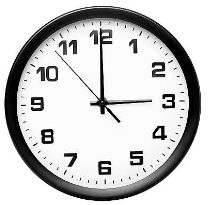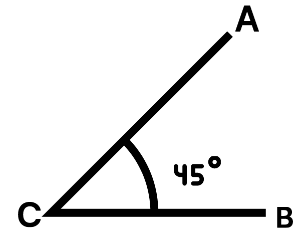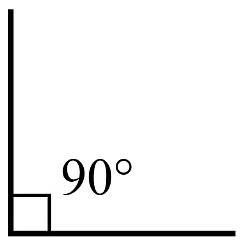Practice Questions: Angles | Math Olympiad for Class 5 PDF Download
Q1: What type of angle is created between the hands of a clock at 3 o’clock?
Ans: Right Angle
At 3 o’clock, the hour and minute hands form a 90° angle, which is a Right Angle.
Q2: What is the angle measure of each angle in a regular triangle?
Ans: 60°
In a regular triangle, the sum of angles is 180°. Since it has three equal angles, each angle is 180° ÷ 3 = 60°.
Q3: How many degrees is a complete angle?
Ans: 360°
A complete angle forms a full circle, which measures 360°.
Q4: What type of angle is an angle measuring 45°?
Ans: Acute Angle
An angle less than 90° is an Acute Angle, so an angle of 45° is an Acute Angle.
Q5: How many degrees are in the angle formed between the hour and minute hands at 12 o’clock?
Ans: 0°
At 12 o’clock, the hour and minute hands are on top of each other, forming an angle of 0°.
Q6: If an angle measures 135°, what type of angle is it?
Ans: Obtuse Angle
An angle greater than 90° but less than 180° is an Obtuse Angle, so 135° is an Obtuse Angle.
Q7: How many degrees are there between the numbers 4 and 7 on a clock?
Ans: 90°
Each number on the clock represents 30°. Between 4 and 7, there are three intervals (4 to 5, 5 to 6, and 6 to 7), so 3 × 30° = 90°.
Q8: What type of angle does a slice of pizza usually have?
Ans: Acute Angle
A typical slice of pizza is narrow, forming an angle less than 90°, making it an Acute Angle.
Q9: If you have a regular hexagon, what is the measure of each angle?
Ans: 120°
A regular hexagon has six equal angles, and the sum of angles is 720°. So, each angle is 720° ÷ 6 = 120°.
Q10: What is the angle formed by the minute and hour hands of a clock at 6 o’clock?
Ans: 180°
At 6 o’clock, the hour and minute hands are opposite each other, forming a Straight Angle of 180°.
Q11: In a regular pentagon, what is the measure of each angle?
Ans: 108°
A regular pentagon has five equal angles, with a total sum of 540°. So, each angle is 540° ÷ 5 = 108°.
Q12: If two lines meet and form a 90° angle, what is this angle called?
Ans: Right Angle
An angle of exactly 90° is called a Right Angle.
Q13: How many angles can be formed by arranging four matchsticks in a square shape?
Ans: 4 angles
A square has four corners, and each corner forms an angle, so four angles are formed.
Q14: What type of angle is formed by the hands of a clock at 1 o’clock?
Ans: Acute Angle
At 1 o’clock, the hour and minute hands form a 30° angle, which is an Acute Angle.
Q15: How many degrees are there in the sum of angles in a quadrilateral?
Ans: 360°
In any quadrilateral, the sum of all interior angles is 360°.
|
37 videos|109 docs|51 tests
|
FAQs on Practice Questions: Angles - Math Olympiad for Class 5
| 1. What are the different types of angles? |  |
| 2. How do you measure angles? |  |
| 3. What is the importance of angles in geometry? |  |
| 4. Can angles be classified based on their size? |  |
| 5. What is a complementary angle? |  |
















